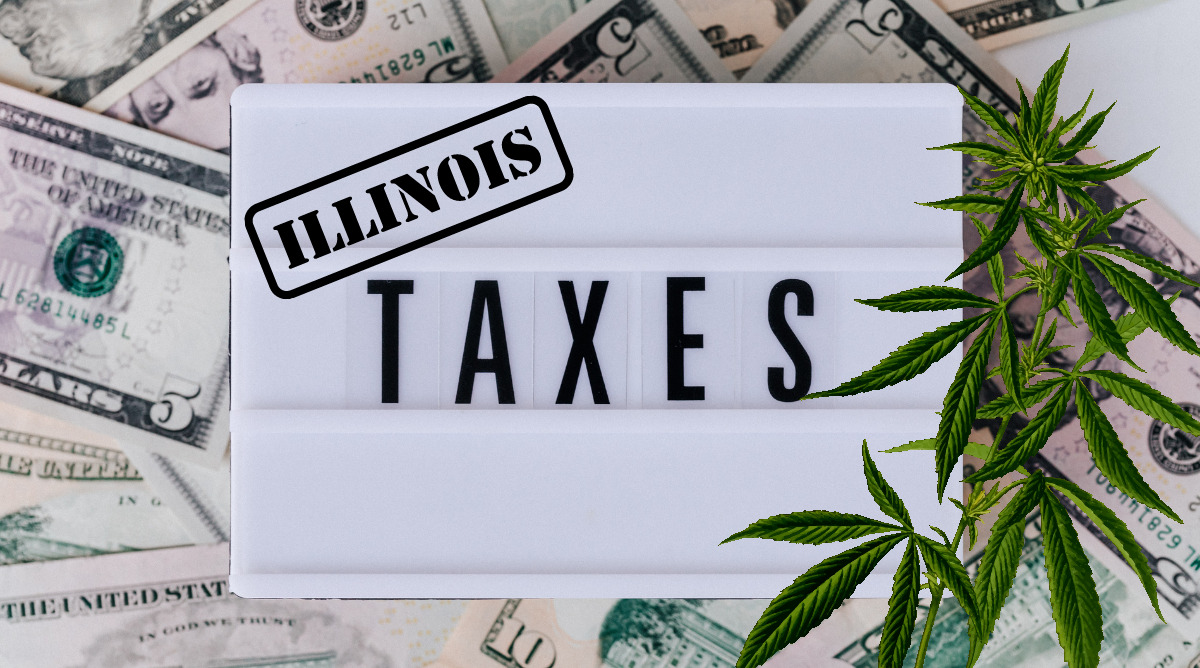
If you have ever wondered where all the tax revenues from cannabis sales go, this will give you some idea. Because states that have legalized medical cannabis create a new revenue stream that infuses tax dollars into pandemic beleaguered budgets. And some jurisdictions have earmarked a percentage of annual cannabis taxes to specific programs.
Illinois is one of those states. In fact, after legalizing adult use on January 1, 2020, there was an unexpected surge in cannabis sales. After the implementation of HB 1438, “The Cannabis Regulation and Tax Act,” no one guessed the demand that Illinois adult-use dispensaries would see. To the extent that several times in 2020, Illinois ran out of cannabis when demand exceeded supply.
After a record-setting year of cannabis sales, some of the tax revenues were appropriated per legislative requirements. How much tax does the state of Illinois collect on all aspects of cannabis cultivation, licensing, production, and retail sales? And where does that tax money go at the end of the year?
Affordability can be a problem for adult-use buyers. But it’s not a problem for patients. You see, patients with a medical card in Illinois are tax exempt, except for a 1% retail occupational tax. It helps to keep it more affordable for patients.
By contrast, purchasing adult-use cannabis in Illinois is expensive. First, there is a 25% excise tax to purchase at a recreational dispensary. Ouch. But that doesn’t include an additional 6.5% state sales tax, for a total of 31.5% tax on all adult-use purchases.
It could be as high as 34.5% if purchased in a community that levies a 3% county excise tax on top. Unincorporated counties or jurisdictions can add 3.75% on top of that. That means some residents of Illinois may be paying over 38% tax on each recreational purchase.
But that is just one step in the levels of tax revenue that the state of Illinois derives from cannabis sales. Retail sales taxes are only the start. There are also commercial taxes that generate a tremendous amount of income for the state.
All taxes are paid into the general Cannabis Regulation Fund. The government of Illinois collects cannabis taxes on every aspect of processing, production, and distribution, which includes:
The combined commercial cannabis taxes coupled with the retail sales taxes for adult and medical use sales quickly added up. How much did the state of Illinois collect in tax revenue in 2020? A whopping $175 million.
In 2020, Illinois experienced the first revenue flow from recreational cannabis sales. And it was good. The allocation of state revenues from cannabis-related taxes was already mandated in the legislation to legalize adult use.
First, all the monies collected are deposited into the Cannabis Regulation Fund. And from there, funds are allocated after the close of the fiscal year. The split of the tax money in Illinois seeks to address important social programs.
Illinois funded the following programs with a portion of the $175 million in cannabis tax revenues from 2020:
In total, social funds in Illinois received $31 million from 2020 cannabis tax revenues. And the state put that money to good use. Residents who did not vote for or support the legalization of cannabis in Illinois still benefit through the injection of tax funding into essential social programs.
Whether you like legal cannabis or not, you have to admit, the taxes are helping states like Illinois by providing a valuable revenue stream. And Illinois is just one example of how cannabis sales support state budgets. It has helped them navigate the cost of the Covid-19 health emergency.
No Information on MarijuanaDoctors.Com should be used to diagnose, treat, prevent or cure any disease or condition. You can view our Full Disclaimer here.